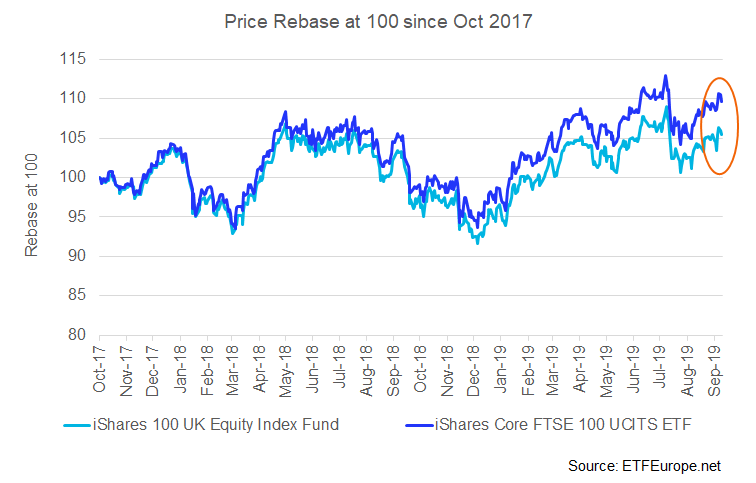ETF v/s FOF: What is the difference?

Investing in mutual funds can be tricky as there are literally over a thousand schemes offered by close to 44 Asset Management Companies. For someone who is new to the world of mutual fund investing, for such individuals it might become difficult in understanding which scheme is more suitable for their investment objective. It is important for new investors to understand all the pros and cons of investing in mutual funds so that they are able to take an informed investment decision. Investing in mutual funds without understanding the objective of the scheme is as good as venturing into unchartered waters.
This article sheds light on two mutual fund investment which are popular among their own niche audience – ETFs and FOFs.
What is ETF?
Exchange traded fund, most commonly referred to as ETF, is an open ended mutual fund schemes that follows a passive investment strategy. Exchange traded funds invest in a diversified portfolio of securities belonging to the same index or benchmark. But unlike mutual funds, ETF units can be traded live at the stock exchange. The NAV of the ETF fluctuates just like the share price of any company stock. Most exchange traded funds track the performance of their underlying index to generate capital appreciation.
What is FOF?
A Fund of Funds is a type of a mutual fund product whose fund manager many invest in other mutual fund/s for income generation. While a normal mutual fund invests in a basket of securities, a Fund of Funds’ investment portfolio will consist of one or multiple mutual fund schemes. This allows an FOF fund to take advantage of the investment strategies of multiple fund managers. A FOF manager buys units of other mutual fund schemes instead of directly investing in securities and asset classes.
ETF v/s FOF
| Comparison | Exchange Traded Funds | Fund of Funds |
| Liquidity | ETFs can be live traded throughout the day at the stock exchange as per its current NAV | Investors can only buy or sell their units as per the NAV determined at the end of the day |
| Structure | ETFs invest in a portfolio of securities belonging to one particular benchmark, commodity, currency, sector etc. | An FOF may invest in one or multiple other mutual fund schemes to help the fund achieve its investment objective |
| Market price | Since ETFs are traded throughout the day, their trade volume determines their NAV. | The NAV of a Fund of Fund is determined at the end of the day and its units are bought or sold as per that value |
| Expense ratio | Exchange traded funds offer passive fund management. The fund manager is only responsible for examining and revaluating the portfolio from time to time. Since ETFs are designed to track the performance of its underlying securities for income generation, they have a relatively low expense ratio. Investors may also have to pay per trade | FOFs have a high expense ratio as compared to ETFs as they are categorized as actively managed funds. However, their expense ratio in comparison with other mutual fund schemes is lower as the fund manager only tries to gain from the expertise of other fund managers and doesn’t buy or sell securities personally |
| Investment mode | One needs to have a demat account to hold on to their ETF units | Investors can invest in a FOF scheme using just a simple mutual fund account. They do not need a demat account |
| Ideal for | Investors who seek passive fund management that involves very less human biasness | Investors who wish to benefit from the expertise of multiple fund managers |
To understand these mutual fund products in great detail, please consult a mutual fund advisor.








